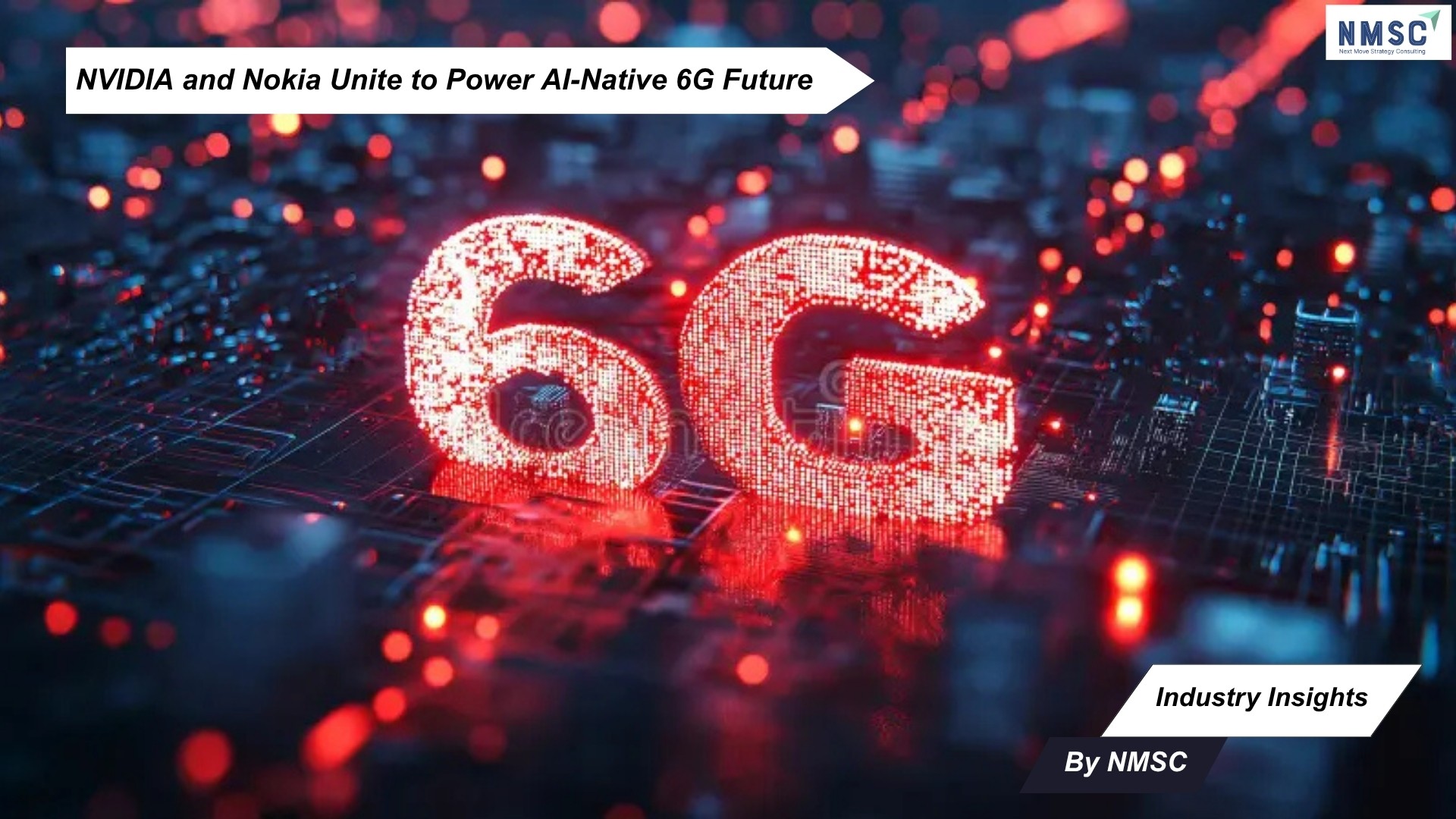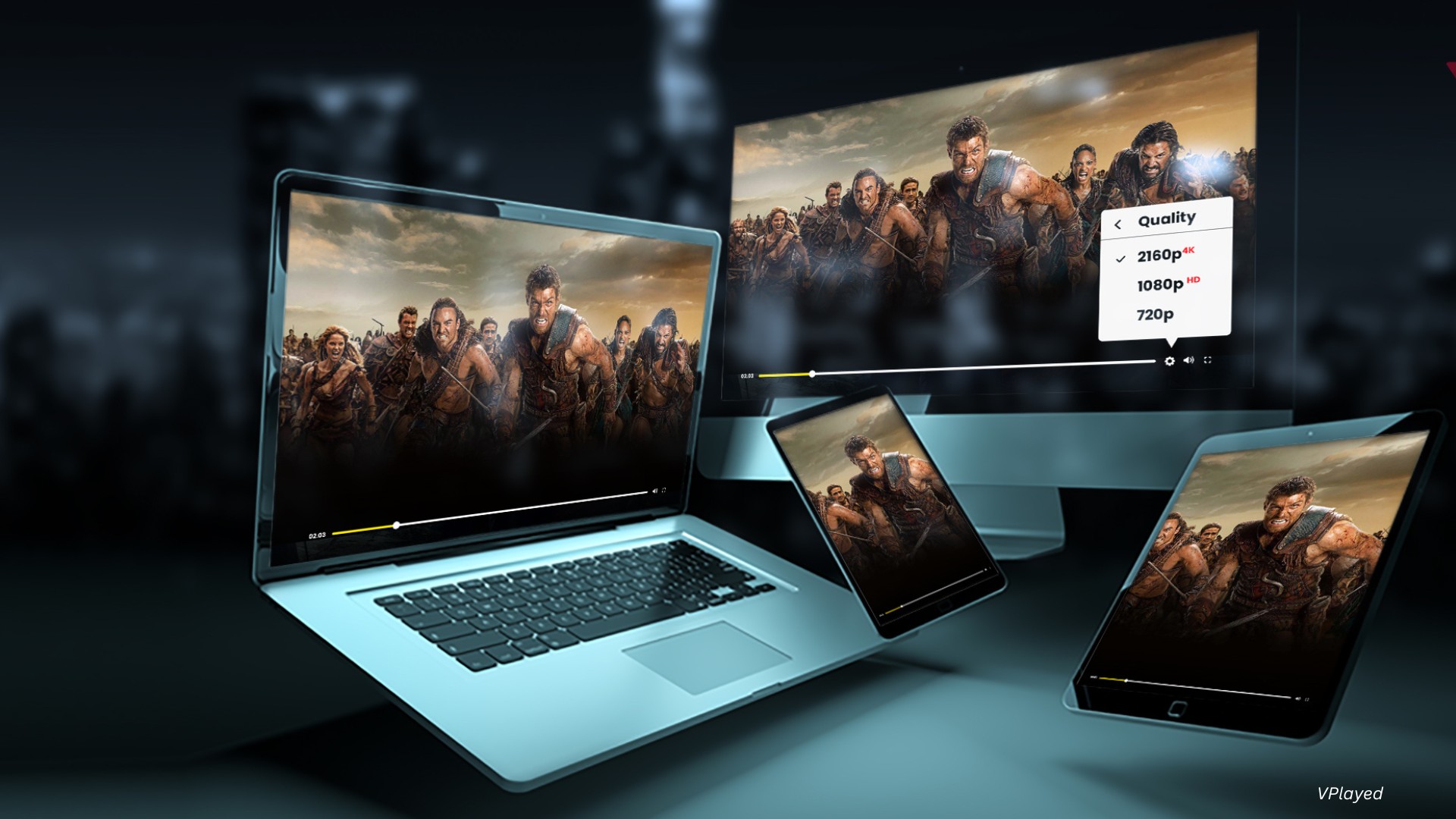NVIDIA and Nokia Unite to Power AI-Native 6G Future
Published: 2025-10-29

Industry Insights from Next Move Strategy Consulting
A new chapter in global telecommunications innovation begins as NVIDIA and Nokia unveil a strategic alliance to drive the AI-native evolution of mobile networks, paving the way for the world’s transition from 5G-Advanced to 6G. Announced at GTC Washington, D.C., this partnership redefines how intelligence, connectivity, and computing converge across the digital ecosystem — a move expected to shape the future of connectivity in the United States and beyond.
A Strategic Leap Toward AI-Native 6G
Under the agreement, NVIDIA will invest $1 billion in Nokia, aligning resources to integrate AI-powered RAN (Radio Access Network) technologies across Nokia’s global portfolio. The collaboration introduces NVIDIA’s Aerial RAN Computer (ARC) — a 6G-ready platform built to deliver seamless connectivity, advanced computing, and edge-based sensing capabilities.
By embedding NVIDIA’s ARC technology into its anyRAN and AirScale systems, Nokia aims to create software-defined, scalable networks that can evolve dynamically through software updates. This modular design ensures a smooth upgrade path for telecom providers transitioning from 5G to 6G, while future-proofing network investments for decades to come.
According to Jensen Huang, Founder and CEO of NVIDIA, the partnership symbolizes a pivotal shift:
“Telecommunications is the digital nervous system of our economy. Built on NVIDIA CUDA and AI, AI-RAN will revolutionize the industry and help the U.S. reclaim its global leadership in infrastructure technology.”
Justin Hotard, President and CEO of Nokia, echoed this vision:
“The next leap in telecom isn’t just from 5G to 6G — it’s a fundamental redesign of the network to deliver AI-powered connectivity. Together with NVIDIA, we’re accelerating AI-RAN innovation to put an AI data center into everyone’s pocket.”
Building the Foundation for Intelligent Networks
The collaboration establishes a comprehensive AI-RAN ecosystem that unifies radio access and artificial intelligence workloads on a single, software-defined infrastructure. This fusion empowers telecom operators to deploy AI services directly at the network edge, ensuring ultra-low latency, real-time analytics, and scalable intelligence delivery across millions of connected devices.
The partnership’s immediate impact extends to T-Mobile U.S., which will test and validate AI-RAN technologies beginning in 2026. The trials will focus on optimizing network performance and energy efficiency, preparing for new AI-native applications such as drones, autonomous vehicles, and immersive extended reality (XR) experiences.
Dell Technologies will play a supporting role, providing Dell PowerEdge servers to power Nokia’s AI-RAN solution. These servers are engineered for seamless scalability and low-touch upgrades, enabling telecom operators to evolve toward 6G capabilities without disrupting existing infrastructure.
Accelerating America’s Return to Telecom Leadership
This collaboration not only reinforces America’s leadership in wireless innovation, but also unlocks a new economic frontier powered by AI-driven telecommunications. As mobile AI traffic continues to surge — with nearly half of ChatGPT’s users now accessing the platform via mobile devices — the demand for advanced, adaptive networks has never been greater.
The AI-RAN market, projected to exceed a cumulative $200 billion by 2030 (according to Omdia), represents one of the most transformative growth opportunities in next-generation connectivity. By combining Nokia’s network expertise with NVIDIA’s accelerated computing platforms, the alliance positions both companies to capture a defining share of this expanding market.
John Saw, CTO at T-Mobile, emphasized the strategic significance of this partnership:
“Our collaboration with Nokia and NVIDIA marks an important step toward shaping the future of connectivity. Beginning in 2026, we’ll conduct field evaluations of AI-RAN to ensure it meets the evolving needs of our customers as we move toward 6G.”
Michael Dell, CEO of Dell Technologies, added:
“Telecom operators own the most valuable real estate for AI — the edge. With Nokia and NVIDIA, we’re transforming that potential into reality, building distributed AI grids that process intelligence where latency and data sovereignty matter most.”
Beyond Connectivity: AI as the New Core
The NVIDIA ARC-Pro computing platform stands as the architectural backbone of this new network paradigm. It integrates connectivity, computing, and sensing to create a unified environment for both RAN functions and edge-based AI applications. This design enables telecom providers to introduce new AI-driven services — from real-time data analytics to immersive mobile experiences — using the same infrastructure that powers 5G and 6G networks.
With Nokia’s AirScale baseband architecture, operators can deploy new AI-RAN modules alongside existing hardware, ensuring flexibility and cost efficiency. The ability to upgrade capabilities through software updates ensures continuous innovation at the speed of AI, setting a new benchmark for telecommunications adaptability.
Next Move Strategy Consulting’s View
According to Next Move Strategy Consulting, the emergence of AI-native 6G Market networks marks a turning point for global telecommunications. The firm notes that the integration of edge computing, AI inferencing, and adaptive network orchestration will not only redefine service quality but also create new revenue models for telecom providers.
6G is expected to move beyond connectivity, functioning as a cognitive and responsive system that senses, learns, and adapts in real time. The NVIDIA-Nokia partnership, viewed through this lens, serves as a strategic blueprint for how technology leaders can merge AI and network intelligence to accelerate digital transformation worldwide.
Next Move Strategy Consulting highlights that AI-RAN-driven 6G will play a central role in enabling the next era of digital experiences — from autonomous mobility and industrial automation to immersive metaverse applications. By aligning AI innovation with network evolution, the partnership effectively positions the U.S. and its allies to lead the global race toward intelligent connectivity.
Redefining the Future of Telecommunications
The NVIDIA and Nokia collaboration represents more than a partnership — it signifies a technological reawakening for the global telecommunications industry. By fusing AI and network intelligence into a unified framework, the companies are setting the foundation for a 6G-ready world defined by speed, adaptability, and intelligence at every layer.
As AI continues to transform industries, this initiative underscores one clear message: the next generation of telecommunications will not simply connect people — it will connect intelligence itself.
Source: nvidianews
Prepared by: Next Move Strategy Consulting
About the Author
 Tania Dey is a highly experienced Content Writer and a passionate SEO Executive with a specialized focus on digital transformation, technology trends, and industry-focused insights. She has honed her expertise in creating compelling, data-driven content that not only enhances online visibility but also aligns with the ever-evolving demands of modern business landscapes. Her work spans a diverse range of industries, including technology, and digital services, enabling organizations to communicate their vision and value propositions effectively to both niches.
Tania Dey is a highly experienced Content Writer and a passionate SEO Executive with a specialized focus on digital transformation, technology trends, and industry-focused insights. She has honed her expertise in creating compelling, data-driven content that not only enhances online visibility but also aligns with the ever-evolving demands of modern business landscapes. Her work spans a diverse range of industries, including technology, and digital services, enabling organizations to communicate their vision and value propositions effectively to both niches.
About the Reviewer
 Sanyukta Deb is an accomplished Content Writer and Digital Marketing Strategist with extensive expertise in content strategy, SEO, and audience engagement. She specializes in building strong brand visibility through data-driven campaigns and impactful, value-added researched content. With a passion for creativity and innovation, she blends strategic thinking with design and communication to craft meaningful digital experiences. Over the years, she has contributed cross-functional marketing projects, driving measurable impact and audience engagement.
Sanyukta Deb is an accomplished Content Writer and Digital Marketing Strategist with extensive expertise in content strategy, SEO, and audience engagement. She specializes in building strong brand visibility through data-driven campaigns and impactful, value-added researched content. With a passion for creativity and innovation, she blends strategic thinking with design and communication to craft meaningful digital experiences. Over the years, she has contributed cross-functional marketing projects, driving measurable impact and audience engagement.
















Add Comment